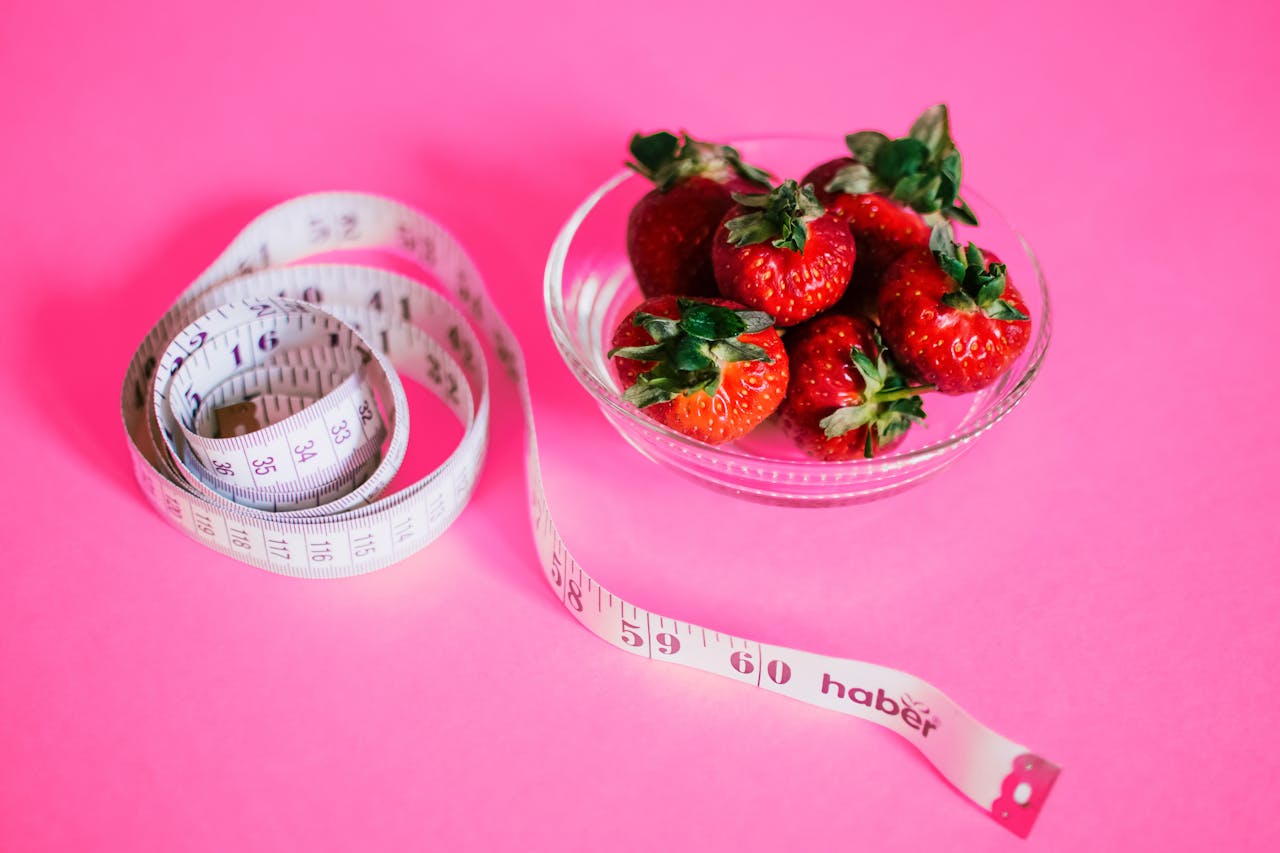Last Updated on October 18, 2024
Achieving your fitness goals—whether that’s losing weight, gaining muscle, or maintaining your current weight—requires a solid understanding of your body’s caloric needs. Enter the calorie calculator Total Daily Energy Expenditure (TDEE), a critical metric that estimates the number of calories you burn each day based on your Basal Metabolic Rate (BMR) and activity level. A TDEE calculator helps determine how many calories you need to consume daily to meet your goals, offering a personalized approach to nutrition and fitness.
What is calorie calculator TDEE?
Total Daily Energy Expenditure (TDEE) is the total amount of calories your body needs to function and carry out daily activities, from the basics like breathing and digesting food (BMR) to physical activities like walking, exercising, or even standing. TDEE considers your unique physiological factors such as age, gender, height, weight, and activity level, making it an accurate representation of your caloric needs.
Understanding the Components of TDEE
To get a comprehensive view of your TDEE, it’s essential to understand the two main components: Basal Metabolic Rate (BMR) and Activity Level.
1. Basal Metabolic Rate (BMR)
BMR represents the number of calories your body needs to maintain vital functions such as breathing, blood circulation, and cell production while at rest. It’s the minimum amount of energy your body requires for basic physiological processes. Factors influencing your BMR include:
- Age: As we age, our metabolism tends to slow down, reducing the number of calories burned at rest.
- Gender: Males typically have a higher BMR than females due to more lean muscle mass.
- Body Composition: Muscle burns more calories than fat, so individuals with a higher muscle mass generally have a higher BMR.
- Genetics: Your genetic makeup can also play a role in determining your metabolic rate.
To calculate your BMR, commonly used formulas include the Harris-Benedict Equation and the Mifflin-St Jeor Equation. The Mifflin-St Jeor Equation is generally considered more accurate:
- For men: BMR = 10 × weight (kg) + 6.25 × height (cm) – 5 × age (years) + 5
- For women: BMR = 10 × weight (kg) + 6.25 × height (cm) – 5 × age (years) – 161
These formulas help estimate the calories you would burn if you stayed in bed all day—essentially, your body’s energy requirement without any physical activity.
2. Activity Level
Once you know your BMR, the next step is to factor in your daily activity level to get your TDEE. This involves multiplying your BMR by an activity factor that matches your lifestyle:
- Sedentary (BMR × 1.2): Little to no exercise, desk job, minimal physical activity.
- Lightly Active (BMR × 1.375): Light exercise or sports 1-3 days per week.
- Moderately Active (BMR × 1.55): Moderate exercise or sports 3-5 days per week.
- Very Active (BMR × 1.725): Hard exercise or sports 6-7 days a week.
- Super Active (BMR × 1.9): Very intense daily exercise, physical job, or twice-daily training sessions.
By multiplying your BMR by the appropriate activity factor, you arrive at your TDEE—the number of calories you need to consume daily to maintain your current weight, given your level of physical activity.
Why Use a TDEE Calculator?
A TDEE calculator is an essential tool for anyone interested in understanding their body’s caloric needs and achieving specific fitness or health goals. Here’s how it can help:
- Weight Loss: To lose weight, you need to create a calorie deficit, meaning you consume fewer calories than your TDEE. A calculator helps you find your maintenance calories so you can strategically reduce intake.
- Weight Gain: For those looking to build muscle or gain weight, consuming calories above your TDEE ensures you have enough energy and nutrients to build new muscle tissue.
- Weight Maintenance: If you’re happy with your current weight and want to maintain it, knowing your TDEE ensures you eat the exact number of calories your body needs.
A TDEE calculator simplifies the process, providing an instant, accurate estimate of your daily caloric needs based on your inputs. It’s a practical way to align your diet and exercise plan with your goals.
How to Use a calorie calculator TDEE
Using a TDEE calculator is straightforward. You’ll typically enter the following details:
- Age: Impacts your BMR, as younger individuals usually have higher metabolic rates.
- Gender: Influences the calculation since men and women have different muscle-to-fat ratios.
- Weight and Height: These measurements help estimate your body’s energy requirements accurately.
- Activity Level: Choose the level that best describes your daily activity to get an accurate TDEE.
Calorie Calculator (TDEE)
Your Total Daily Energy Expenditure (TDEE) is:
0 Calories/day
Once you input this data, the calculator will provide your estimated TDEE. You can then use this information to customize your diet according to your goal—whether it’s to cut calories for weight loss, add more for muscle gain, or maintain your current intake.
Adapting Your Caloric Intake
The beauty of understanding TDEE is that it’s adaptable. Depending on your goals, you can modify your caloric intake strategically:
1. Caloric Deficit for Weight Loss
To lose weight effectively, you’ll need to consume fewer calories than your TDEE, creating a caloric deficit. A common and safe approach is to reduce intake by 500 calories per day, leading to approximately 0.5 kg (1 pound) of weight loss per week. This method is sustainable and helps prevent muscle loss and nutrient deficiencies.
2. Caloric Surplus for Weight Gain
To gain muscle mass or weight, consuming more calories than your TDEE is necessary. Aiming for a 250-500 calorie surplus per day supports gradual, steady muscle growth. It’s important to pair this surplus with strength training to ensure the extra calories contribute to muscle gain rather than fat accumulation.
3. Maintenance Calories
If your goal is to maintain your current weight, consuming calories equal to your TDEE keeps you in balance. This is perfect for those who are happy with their physique or want to focus on building strength without changing body weight. Tracking your intake and adjusting based on fluctuations ensures consistency.
TDEE Calculator and Macros
While TDEE gives you an overall caloric target, tracking macronutrients (macros) like protein, carbohydrates, and fats helps optimize your nutrition. Once you have your TDEE, you can break down your calories into specific macros based on your goals:
- Protein: Essential for muscle repair and growth, protein intake is crucial, especially when building muscle or dieting. A general guideline is 1.6-2.2 grams per kilogram of body weight.
- Carbohydrates: The primary energy source for most activities. Adjust your carb intake based on your activity level and whether you aim to lose or gain weight.
- Fats: Necessary for hormone production and overall health. Aim for about 20-35% of your total caloric intake from healthy fats like avocados, nuts, and olive oil.
Limitations of TDEE Calculators
While TDEE calculators are incredibly useful, they do have limitations:
- Estimations: TDEE calculators provide an estimate based on general formulas and individual inputs, but they don’t account for body composition specifics like muscle mass versus fat percentage.
- Dynamic Changes: As you lose or gain weight, your TDEE changes. Regularly updating your details in the calculator ensures accuracy.
- Activity Level Accuracy: Self-reporting activity levels can be subjective. If you overestimate your activity level, the calculator may suggest more calories than you actually need.
For these reasons, a TDEE calculator should be used as a guideline rather than a precise measure. Listening to your body, tracking progress, and adjusting based on results can help fine-tune your caloric needs.
Tips for Accurately Calculating and Using Your TDEE
- Be Honest About Activity Levels: Assess your daily activity level realistically. If you’re unsure, choose a lower activity factor to avoid overestimating your calorie needs.
- Track Progress: Monitor your weight and adjust your caloric intake based on results. If you’re not seeing changes after a few weeks, re-evaluate your inputs and activity levels.
- Recalculate Regularly: As your weight, age, or activity level changes, recalculate your TDEE to maintain accuracy.
- Pair with Tracking Apps: Using apps like MyFitnessPal can help track caloric intake and macros, ensuring you’re sticking to your TDEE targets.

Empowering Your Fitness Journey with TDEE
A TDEE calculator is more than just a tool; it’s a gateway to a deeper understanding of your body’s energy needs. By calculating your TDEE and adjusting your caloric intake based on your goals, you gain control over your nutrition, enabling you to create a diet plan that works in harmony with your fitness objectives.
Whether you aim to lose weight, gain muscle, or maintain your current state, knowing your TDEE is the first step in building a more informed and effective approach to health and wellness. Embrace the power of TDEE, and start making data-driven choices that lead to real, sustainable results.







